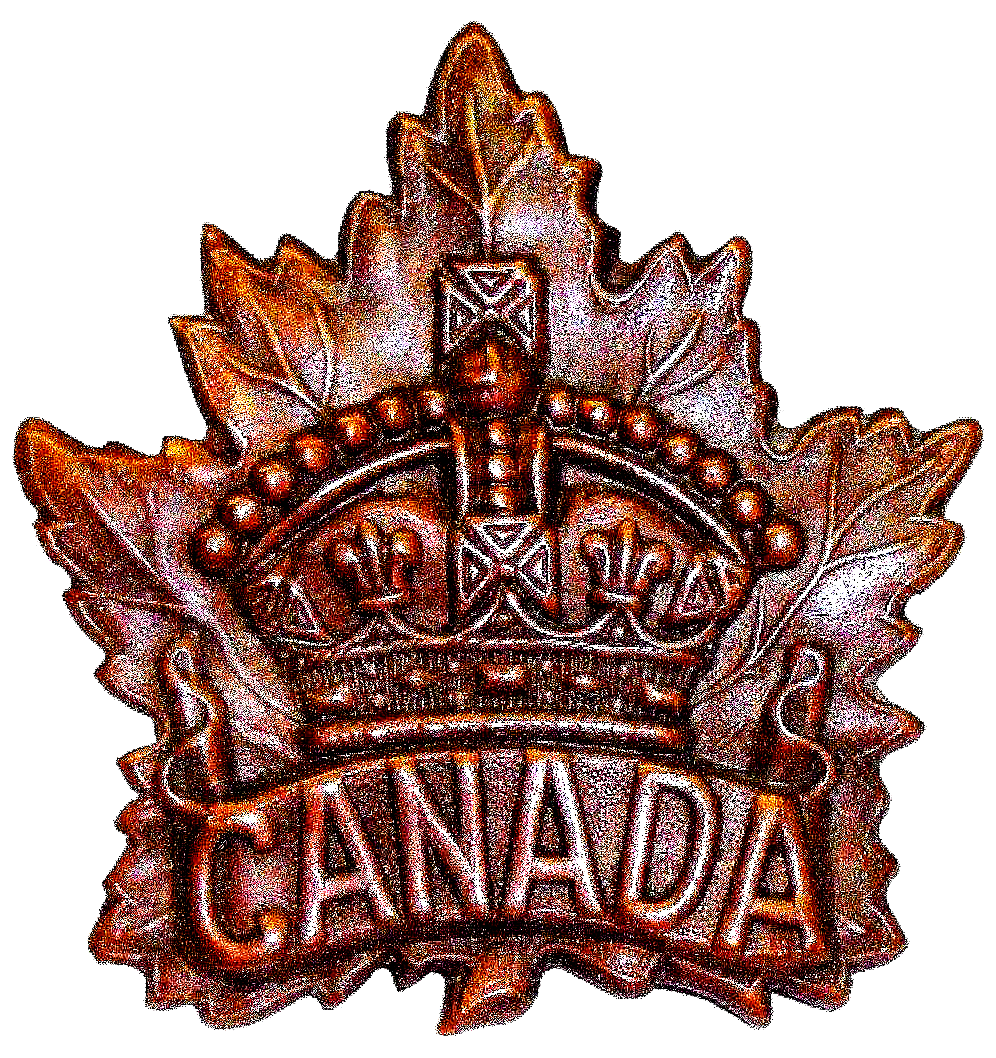
OPCMH
ORGANIZATION
for
PRESERVATION
of
CANADIAN
MILITARY
HERITAGE |

OPCMH
Visitor No.:
1493383
since
2015-03-21
| |
HISTORY OF WORK POINT BARRACKS
by Jack Bates
PART 4 — 1907 to 1918
1912
Daily Colonist
January 17, 1912
Battle for Archives
An historical treasure was yesterday added to those which will be carefully preserved in the provincial archives, this being the original pair of old fashioned scales brought out by the Royal Engineers, who laid the foundation of the city of New Westminster, and forming part of the medical stores equipment brought out in the old sailing ship “Thames City” which left the old country for this new colony on the 6th of November, 1853. Many pioneer medical men of the province have endeavored to secure, possession of this historic souvenir, which has been for some time past in the possession of ex Mayor W.H. Keary, of New Westminster. That gentleman has now, through Mr. Thos. Gifford, M.P.P. presented the scales to Hon. Dr. young, by whom they were yesterday placed in the custody of the provincial archivist.
January 19, 1912
Thames City Voyage
In connection with the scales belonging to the Royal Engineers who laid out New Westminster, which were deposited in the provincial department of archives a few days ago, fresh information has now come to hand about the voyage out here of the sailing ship “Thames City,” which brought them. Mr. G.M. Sprout informs us that the Thames City left Gravesend on October 10th, 1858, and the Downs on October 17th, having been wind bound in the latter during the intermediate period. On November 6th, the ship was 1,890 miles on her voyage, counting from the Lizard Light, Cornwall. This latter date was also the date of the final issue of the little weekly gazette published on shipboard, but not, as has been assumed the date of the ship’s sailing. The “Thames City” did not reach Esquimalt until April 12th, 1859, completing a voyage of six months duration, only by a stay at the Falklands for water and ballast, from December 28th to January 12th, and a call at Valparaiso for mails in February.
COLONIST
March 8, 1912 (1)
NEW REGIMENT FOR VICTORIA
An article on the formation of a new regiment in Victoria, the 88th Regiment (Victoria Fusiliers).
March 26, 1912
Artillerymen Arrive
A detachment of 35 non-commissioned officers and men of No. 4 Company, C.G.A. under Captain W.B. Almon, have arrived at Work Point to augment the local garrison now for the work now under way of mounting the two 9.2 guns at Signal Hill. Major Mills, officer commanding the local artillery forces, has been engaged in this work for some time, and up to the present about ninety tons of material has been taken up the hill.
COLONIST
May 5, 1912
THE 5TH REGIMENT – PRESENT OUTLOOK
An article, supplied by the 5th Regiment to the Colonist with photos, including letters from prominent citizens in Victoria. The current commanding officer was Lt. Col. A. W. Currie.
May 9, 1912
This is where my dear mother entered the world, with a simple announcement in the newspaper:
Born: PHILLIPS – At Esquimalt, B.C., on the 8th inst., to wife of W.T. Phillips, a daughter.
She was honored at the Diamond Jubilee in 1972 and the 75 year Celebration in 1987 as a pioneer resident of Esquimalt, receiving a commemorative medal on both occasions of which she was proud of and cherished them. Born Winifred May Phillips at 519 Lampson St. also known as “Ferndale”. She married my father in 1939 and was a resident of Esquimalt for 82 years of her life, passing away in 2002. She is buried at Ross Bay cemetery with my father. Her last address in Esquimalt was 1224 Bewdley Ave.
Coincidently, in August 1912, my father, Alfred Arthur Bates, at the age of 11, arrived in Victoria from Woolwich, Kent, England, with his family. With him were his father, James Enoch, mother Hannah Maria, brothers Robert Frederick (Frank) and John Reginald, sisters Kathleen Agnes (Kitty), Rose Ellen and Nora. The oldest brother James Albert, arrived in July 1913. Their first house of record is 938 Collinson Ave in 1913, presently a heritage recognized dwelling. I believe initially the family stayed with Hannah’s older brother George and his family at 851/3 Johnson St. My father passed away in 1993 and is buried at Ross Bay cemetery with his father.
Esquimalt 1912-1962
50 year Edition.
Esquimalt as a municipality was born in September 1912, just after Victoria marked its fiftieth anniversary as an incorporated city.
A former native of New Brunswick, and editor of the Victoria Colonist, Charles H. Lugrin, became the first Reeve, being elected by acclamation. Those voted to office as councilors were: James Stewart McAdam, Robert Allan Anderson, George Frank Matthews, John T.L. Myers, Col. James Peters and C. Arthur Rea. First school trustees were: Lieutenant Andrew Mulcahy, Mrs. Alice Birch, Leonard Tait, Bert Nantrop and George R. Robson.
The first council meeting was held in two parts. There being no municipal hall, Reeve Lugrin and his council met at noon at the Soldiers’ and Sailors’ home and in the evening in Lampson Street school.
There were not more than a thousand people in Esquimalt at the time of its incorporation, and Esquimalt road was a rough winding road on which No. 4 street car (the sailor’s special) rattled its way to the end of the line on the Esquimalt road. No. 4 was destined to ply this route for another thirty years and more.
Incorporation meant the end of the four sub post office districts into which the township of Esquimalt had been divided – Esquimalt Village, Beaumont, Thoubirn and Burlieth. It meant the start of the Esquimalt Police force, with Mr. John Gray as chief and William Sadler as his assistant. Previously the area was kept in tolerable order by one provincial police constable.
Letters patent was formally signed on August 15th, 1912, creating the “Corporation of the Township of Esquimalt,” recognized as such from September 1st onward.
Daily Colonist
June 18, 1912
CITIZEN SOLDIERS AND REGULARS CAMP
Fifth Regiment, C.G.A., Goes Into Annual Training With Greater Strength
Than At Any Previous Period
The Fifth regiment C.G.A., in greater strength than at any time, even during the days when the martial spirit was aroused by the Boer War, marched from the Drill Hall on Sunday morning and proceeded into camp at Macaulay Point. Headed by the regimental band of forty pieces, the artillery regiment, in command of Lieut. Col. A.W. Currie, marched out from the drill hall over 300 strong, and a halt was made in front of the Parliament buildings while a photograph was taken. Thence the gunners marched to Pembroke street, where street cars were provided to take the regiment to Lampson street. There No.’s 2 and 3 companies, under command of Major W. Winsby and Captain J.C. Harris, debarked and marched to Macaulay Plains, and No.1 company proceeded to Esquimalt to go into camp at the Drydock.
Fatigue parties had been sent to the camp previously and when the artillerymen marched to the camp to the strains of “The British Grenadiers,” tents were issued, and in a short time the canvas village came into being. Soon after the Fifth Regiment pitched its camp an advance party of the 18th Field Ambulance Corps of Vancouver arrived and proceeded to erect the camp adjoining the artillerymen, and yesterday afternoon the Field Ambulance Corps, 85 strong, under command of Major McTavish, arrived by the afternoon steamer and marched into camp. The Field Engineers of Vancouver are also coming and on Friday the 104th Regiment of Infantry, will arrive and pitch its camp. The canvas village extends in a went into the Macaulay Point fort in with the headquarters tents in the front.
The permanent force is in camp with the militiamen, and the work of training was begun yesterday. The camp has been located by the engineers, under command of Major W.B. Lindsay, and everything requisite to a modern military encampment has been provded. Yesterday morning, No. 2 company went into the Macaulay Point fort to train on the six inch guns in place there and No. 3 company went to work with its battery of field guns.
Distinguished Visitor
General Colin Mackenzie, C.B., Chief of the Canadian section of the Imperial General Staff, is expected to arrive in camp today. General Mackenzie, who was formerly of the Seaforth Highlanders, has had a distinguished military career, having held appointments as regimental adjutant and A.D.C. to Lord Roberts when that famous soldier was commander in chief in India, also D.A.A. – General, Quetia District, Balneniaian, and South Africa. He was director of military intelligence in South Africa, military governor of Johannesburg and commanded the mobile column. He has served in many campaigns, in several of which he was mentioned in despatches, receiving this honor three times in South Africa. He served in the Egyptian campaign of 1882; Burma, 1886-8; Hazara 1888; Hunzu-Nagar, Gilgit, 189-1; Waxirituan, 1894-5; Nile campaign, including Khartoum, 1898; and South Africa, 1899-02.
It was expected the Col. The Hon. Sam Hughes, Minister of Militia would also arrive during the camp, but he was unable to leave Ottawa and will not start from the capital until July 1.
Camp Headquarters
The general camp is in command of Lieut. Col. A.W. Currie, officer commanding the Fifth regiment C.G.A. Lieut. Col. Currie raised his flag in front of his tent at headquarters on Sunday, Captain P.T. Stern will act as orderly officer. The administrative staff will be headed by Captain F.W.I. Moore, district staff officer of No. 11 Military District, who will be district adjutant general and quartermaster general. The various departments will be in the hands of the following: Camp Engineer, Major B.W. Lindsay, R.C.E.; transport, Captain J.F. Foulkes, C.A.P.C.; medical officer, Major E.C. Hart, P.A.M.C.; sanitary officer, Lieut. H. R. Robertson, Fifth regiment; ordnance officer, Sub-conductor W. Prvost, C.O.C.; paymaster, Captain J.F. Foulkes; C.A. Hulme 6th D.C.O.R., signaling corps; intelligence officer, Major T.W.G. Bryan, Corps of Guides.
After playing the 104th Regiment from new Westminster into camp on Friday evening the Fifth regiment band will give a band concert at headquarters and on Saturday the annual regimental sports will be held.
The Vancouver infantry regiments will not go into the Macaulay Point Camp at the close of the mobilization manoeuvres to be held on July 1, as was previously expected. The Vancouver forces, the sixth D.C.O.R. Rifles and 72nd Seaforth Highlanders, will march from Mill Bay and on the morning of Monday, July 1, a sham battle will take place somewhere in the outskirts of Victoria, the total strength from the camp at Macaulay Plains, acting as defenders, while the attack will be made by the two infantry regiments from Vancouver.
The regulations enforced at the eastern Canadian military camps with regard to the use of beer or other beverages stronger than ginger pop have been put in force at Macaulay Plains, it will be a dry camp.
June 27, 1912
DAILY ROUTINE AT MACAULAY CAMP
Citizen Soldiery Are Proving Their Efficiency and Will Show Their Mettle
At Week End in Field Manoeuvres
Reveille! The tented village wakes to life with a start as the gun fire sounds at 5:30 a.m. and the buglers along the line, from headquarters to the Ambulance Corps on the extreme left, sound the morning call. Clear, staccato and imperative, it rings crisply across the quiet morning. The tired sentry looks longingly down the lines, and knows that with the awakening of the camp a new guard will soon be turned out and mounted, and at the ablution tables there is soon a line of bending figures.
This is how morning comes at the militia encampment on Macaulay Plains. At 6:30 a.m. the bugler sounds the more welcome call: “Come to the cook house door,” and the gunners and gravelcrushers, pill brigade, signallers, engineers file off to the mess tents for the morning meal. This over, the “Fall in” sounds and the infantrymen begin work, doing company or battalion drill, the ambulance corps go out into the square to do stretcher drill and the bands practice. The artillerymen do their work in the evening, the gunners leaving for the city after breakfast to carry out their daily vocations, and after their day’s work in the city is done they hurry back as fast as a delayed car service will allow, to fill the mess tents, and and then hurriedly change to their khaki service uniforms and fall in for gun drill.
No. 2 company of the artillery, marches off into the fort to go on the six inch guns, and No. 3 company mans its guns and hauls them away into the field nearby to do battery manoeuvres and practice. No. 1 company is at Esquimalt, training by itself far from the headquarter’s camp. Last night No. 2 company and No. 1 company continued their practice to train the gun layers and crew with one inch aiming ammunition, Morris tubes being placed in the guns, and No. 3 company continued its battery practice.
Meanwhile a headquarters where the camp commandant, Lt. Col. A.W. Currie, and his staff are, maps and reports of the reconnaissance in the country between Victoria and Goldstream, the location of the “war” which opens on Sunday and will end on Monday night, are being studied and a plan of campaign laid out to protect the fair city of Victoria from invasion by the Highlanders and Riflemen who leave Vancouver tomorrow on the steamer Princess Mary, to make their landing at Cowichan Bay, from where they will march southward, and on Sunday will reach the vicinity of Goldstream, where their advance party will come into contact with the screen of the forces of the defending brigade. Then the war will begin. The defenders will probably march out of camp Sunday evening to advance toward the enemy. After the battle the Vancouver regiments will march to the C.P.R. wharf on Monday night and will embark on the steamer Charmer to return too Vancouver. The original programme provided for a joint parade to be held by the combined forces.
The 104th regiment is expected to break camp on Monday to return to New Westminster, Cloverdale and Chilliwack. This regiment, which now possesses but four companies, two in New Westminster and one each in Cloverdale and Chilliwack, is eventually to be increased to eight companies. It is a fusilier corps, associated with the Royal Munsters. Every day sees an improvement in the training of the infantrymen.
It is anticipated that the joint camp at Macaulay Plains will be an annual feature, and an effort will be made by the militia department to bring the artillerymen into camp next year for a week to attend the whole time in camp, instead of leaving during the day.
Tonight No. 2 company will carry out its preliminary firing practice with 100 pound shells from the Macaulay Point fort, and No. 1 and No. 3 companies will will practice on Friday evening. The latter will fire its field guns from the field near the camp, and it is anticipated that many vistors will take the occasion to visit the camp to see the gun practice and listen to the band concert. On Saturday afternoon all three of the artillery companies will practice with service ammunition.
COLONIST
July 9, 1912 (8)
COLONEL HUGHES COMING
Col. The Hon. S. Hughes is expected to arrive here about July 20 and will look into various matters connected with the militia department. The subject of the new drill hall, rifle range and formations of a new infantry regiment will be among the matters brought to the attention of the minister of militia during his stay here.
It is not known whether he will inspect the local forces, but it is expected that this will be the case. A visit of inspection will also be probable made to Signal Hill, where the battery of 9.2 guns is being installed by the engineers and artillerymen of the Work Point Barracks.
Col. Hughes will also visit the cadet camp, which will be in progress at Macaulay Point when he reaches the city. Ninety teachers and instructors have gone into camp at Macaulay Palins and on Monday, July 11, cadets in the number of a thousand from various parts of the province will go into camp. Major Snow, of the Corps of Guides, inspector of cadets, will be in charge of the camp.
August 31, 1912
REPRESENTATIVE MEETING OF THE RATEPAYERS AT NEW MUNICIPALITY
LAST EVENING SELECTS CANDIDATES FOR ELECTIONS
Mr. C.H. Lugrin chosen for Reeve
One hundred and ninety two of the voters of Esquimalt decided by an overwhelming majority last night, at a meeting in the Soldiers’ and Sailors’ home, to endeavour to avoid the cost of an election by a selection then and there of a Reeve and 6 councilors whom they will support on nomination day. The selection of Mr. C.H. Lugrin as Reeve, and Col. Peters as the 1st councilor was then carried by acclamation, and on a ballot being taken, Messrs. G. Matthews, C.A. Rae, J.S. McAdam, J.T.L. Myers, and R. Anderson were selected to fill the remaining five places on Council.
Mr. H. Pooley, M.P.P., informed the meeting that the Government had promised to hand over to the Municipality the taxes as from September 1st, the sum of about $5,000.00.
The Soldiers’ and Sailors’ home is now, or with sadness the old Tudor House, at the corner of Admirals and Esquimalt roads.
COLONIST
September 1912
ESQUIMALT ELECTION
First Municipal Poll Passes Off Quietly – No Surprises in the Returns
Only 173 of the 263 registered resident property owners voted yesterday at the first municipal election for Esquimalt. The result was practically as anticipated, the official candidates being all elected.
The result of the poll for councillors was as follows: Elected: James Stewart McAdam, 129; Robert Allen Anderson, 123; Geo. Frank Matthews, 122; John T.L. Meyer, 115; Colonel James Peters, 111; C. Arthur Rea, 106; not elected: James F. Mesher, 89; George J. Cooke, 14. There were three spoilt ballots.
The votes for school trustees were the first five forming the new board: Lieut. Andrew Mulcahey, R.C.G.A., 210; Mrs. Alice Birch, 184; Leonard Tait, 182; Bertram Nantrop, 176; Geo. R. Robson, 163; Frederick Guest, 143.
There were 342 ballots cast, five votes being spoilt.
The statutory meeting of the new council will be at noon on Monday.
COLONIST
September 15, 1912 (6)
GUNNERS IN TRAINING
No. 5 Company, of the Royal Canadian Garrison Artillery, under Major J. Mills, have gone into camp at Rod Hill for their annual training. The work on the guns of the forts has been delayed this year owing to the work of mounting the guns at Signal Hill, in which a number of artillerymen from No. 4 Company from Quebec assisted. These gunners have gone into the barracks and have been distributed to Macaulay and other forts.
Click for PDF image.
October 13, 1912
THE PERMANENT FORCE AT ESQUIMALT
Supplement 1
The little garrison of Esquimalt, since the departure of the Imperial troops some years ago, has been a meager one; far from adequate to handle the equipment of the land defences, inadequate though they are. The only changes made since the Imperial troops left here have been the reduction of the garrison to a total complement of 150 rank and file, including the headquarters staff of Military District No. 11, comprising all British Columbia and the Yukon located there; and the mountings of two 9.2 guns on Signal Hill. There are insufficient men in the Esquimalt garrison at present to supply fifty percent of the manning strength to supply one detail for the armament if every available man from the office clerks to camp cooks were included.
There are in Esquimalt garrison 7 officers, 3 warrant officers, 137 non commissioned officers and men, and 3 civilians – 150 in all. At Halifax, there are 67 officers, 22 warrant officers, 1,185 non-commissioned officers and men, and 1 civilian – a total of 1275. In the last fiscal year the pay and allowances for the Esquimalt garrison totalled $65, 476.56, while that of Halifax garrison amounted to $514,027.26.
There is ample barrack accommodation, a legacy from the Imperial garrison, to house a complement sufficient to man the local defences and keep them in good condition. Much of the accommodation has long been vacant. The scanty garrison of Esquimalt, 150 all told, is split up among the forts, ordnance yard, workshops, drawing offices, etc and when it is necessary to do the training on the guns the business of many parts of the garrison closes down; whenever a parade is called the offices and the workshops close, the various parts are left with a meager portion of the group of watchmen stationed there. There is not a unit of the garrison up to strength.
The Canadian branch of the Imperial General Staff, to a large extent, controls, through the finance department at Ottawa, the general policy of the land defence on the Pacific seaboard of Canada. For the past few years, the general policy of the Imperial government has been to rely more on the fact that Britain has a treaty with Japan than to regard the importance of the defence of the British Columbia coast. The Canadian section of the Imperial staff takes its cue from Whitehall. How different this policy is from that desired by every resident on the Pacific coast, is well known.
Defences are needed, but no provision is made. The little garrison is scarcely more than a group of caretakers in charge of the works left by the Imperial garrison. Many things are urgently required, both in armament and personnel. When the Imperial garrison departed, the mines used to guard the entrance to Esquimalt harbor were lifted, the submarine section of the engineers disbanded, and no effort was made to keep up with progress or cope with changing conditions. The same old armament which is a survival of another day, of the type long since abandoned elsewhere, remains in the defences, only the small armament and the 9.2 guns recently placed on Signal Hill being modern.
The personnel is too scant to attempt to cope with requirements. Provision is needed for adequate administrative services, executive officers and reserves of stores for mobilization. It would take long to describe the necessities in this regard, for the present garrison has not even a minimum of office staff and general personnel to carry on its work efficiently.
Some particulars regarding the headquarters staff of Military District No. 11 and the garrison will, doubtless, be of interest, as they have been furnished by a military correspondent.
The units and their officers are listed below from photographs:
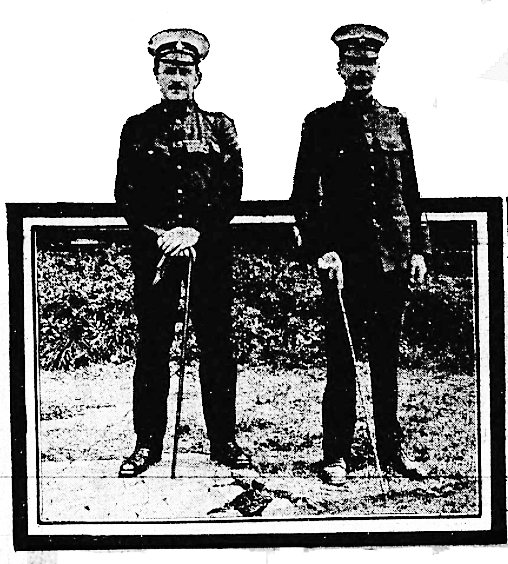 |
| Canadian Army Pay Corps: Captain Foulkes, Sergeant Major Rows |
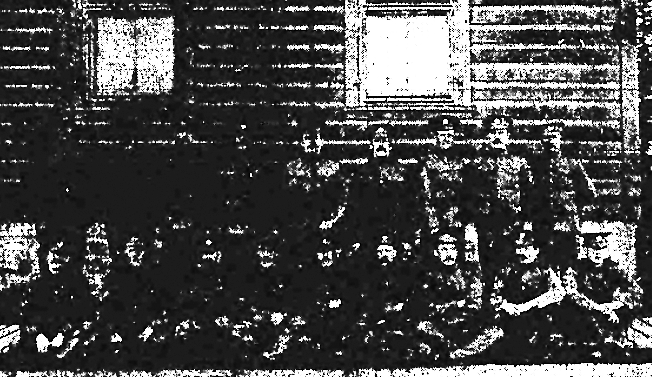 |
| Third Fortress Company, RCE, Major W.B.Lindsay |
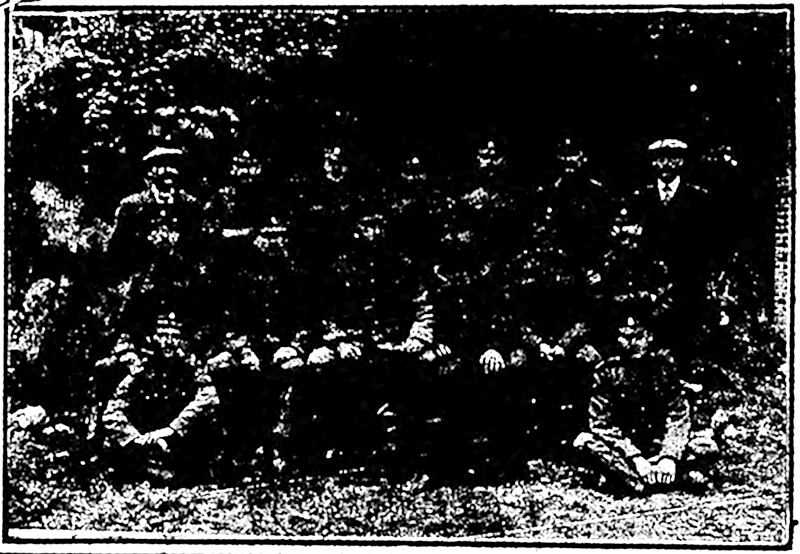 |
| No. 11 Detachment, Canadian Ordnance Corps, Captain Bray |
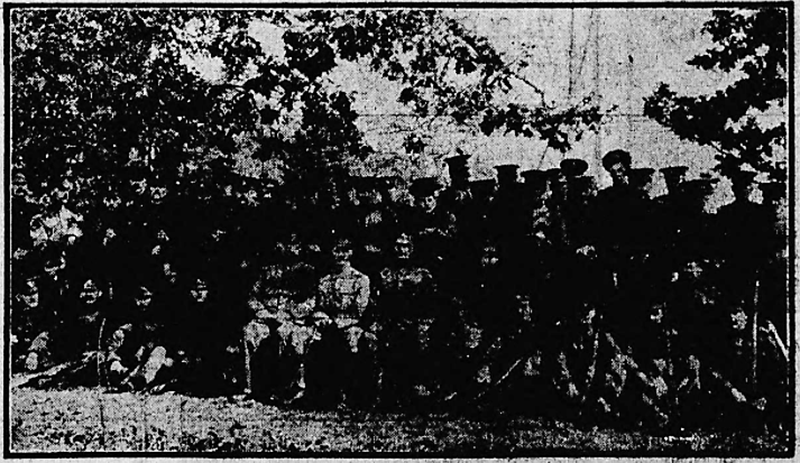 |
| The Company, Lieut. Mulcahy, Major Mills, Coy. Sergt. Major Farley |
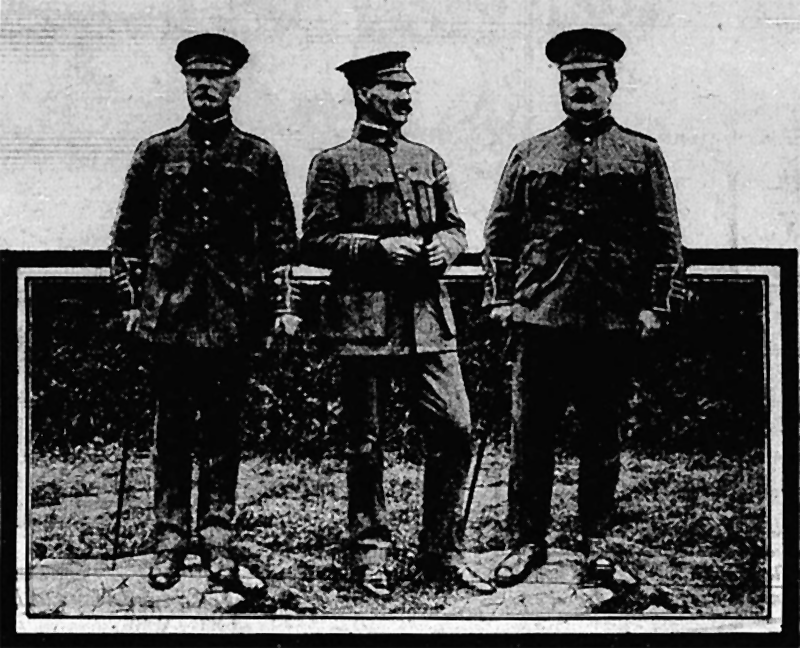 |
| Colonel Wadmore, D.O.C., Captain Moore, D.S.A, Major Lindsay, C.R.C.E. |
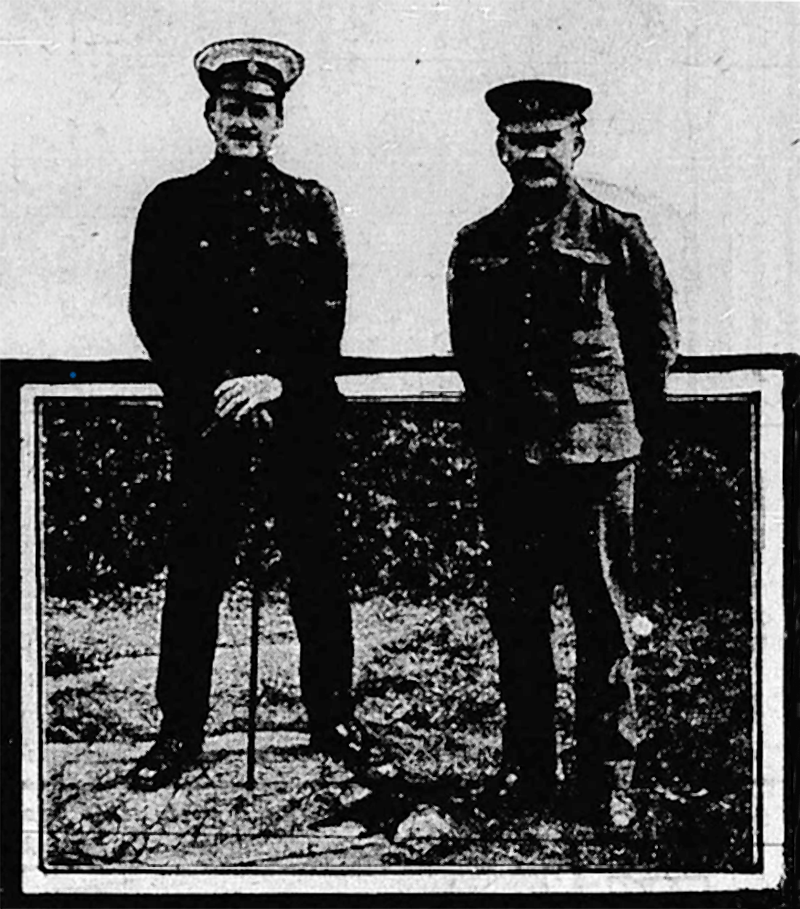 |
Canadian Permanent Army Service Corps
Captain Foulkes, CAPC and Qr. Mr. Sergt. Robertson, C.M.S.C. |
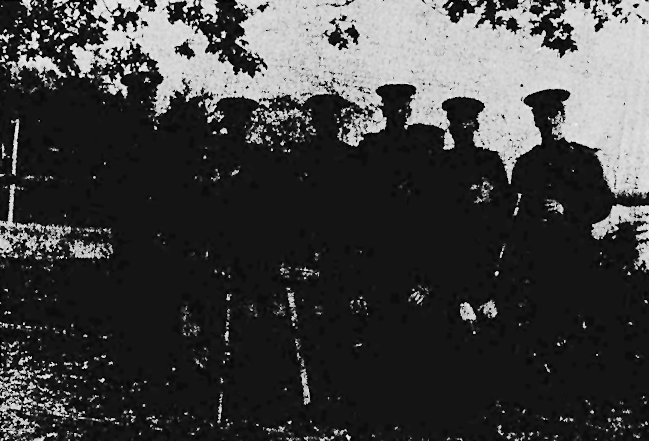 |
| The Sergeants |
Supplement 2
Unique in Canada
Colonel Wadmore commands the district, and Captain Moore is the district staff adjutant who carries out his orders. The district has no larger organized unit than a regiment, being the only Canadian district which has no infantry, cavalry or artillery brigade. The Royal Canadian Artillery, No. 5 Company of which is stationed here, was organized on October 20, 1871. It is thus the oldest permanent force in the Dominion. It supplied many officers and men to the Royal Northwest Mounted Police on the formation of that body. It was not until August 10, 1883, however, that the R.C.A. was organized as a regiment. The headquarters is at Quebec, and Field Marshall Earl Roberts is the honorary colonel. The R.C.A. is composed of Royal Canadian Horse Artillery, with headquarters at Kingston, and Royal Canadian Garrison Artillery, with headquarters at Halifax of the R.C.G.A. No’s. 1 and 2 companies are at Halifax, No’s. 3 and 4 at Quebec and No. 5 at Esquimalt. The establishment of No. 5 includes 4 officers, but there are only three on the strength, Major J.E. Mills, Captains A.E. Harris and L.W. S. Cockburn. The two latter are now in England undergoing courses of instruction. This leaves Major Mills single handed. There is a small District R.C.G.A. staff under Lieutenant A. Mulcahy, which has charge of the machinery of the armament and shells.
The Royal Canadian Engineers were organized on July 1, 1903, with headquarters at Ottawa. There are three companies, 1st (Fortress) company at Halifax, left half of and (Field) company at Quebec, right half of and (Field) company at Toronto, 3rd (Fortress) company at Esquimalt. It should be borne in mind that the company work is the smallest part of the R.C.E. Each military district has its engineer officer with a large office, clerks, draughtsmen, etc. Again each division has its commanding Royal Canadian Engineer, who may be of any rank from major to lieutenant.
The district engineer’s office at Work Point is responsible for at least six departments of work. At the same time all the men of the company are employed in the workshops, of which there are many. This year, during August, nine sappers under Major Lindsay, who has since been sent to an eastern district, and Major Carey has taken his place, went under canvas at Rod Hill for training in making field works of all kinds. The log hut overlooking Esquimalt harbor was made by the sappers some years ago for the C.R.E.C. to live in.
The permanent army medical corps was organized on July 2, 1904. It has twelve detachments, of which No. 9 is at Work Point barracks, with a small hospital. The detachment is in command of Major E.C. Hart.
The Canadian Permanent Army Service corps was organized December 1, 1903. One word of explaining as to its functions, first that of transport. It has to arrange and hire transport required by all arms and departments, horse, rail, motor and steamer. Secondly, that of supply; it has to make contracts for the supply of al food, fuel, light, etc, for both permanent force and active militia. A few years ago there was an officer and a few men at Work Point, but now there are none. The work has still to be done, so Captain Foulkes (C.A.P.C.) and quartermaster Sergeant Robertson (corps of military staff clerks) have to get through the work as best they can. This important work is only a secondary call on their time, as they each have their own proper work to carry on.
The Canadian Ordnance Corps was organized in July 1, 1903, with headquarters at Ottawa, where the chief stores are, and issues made to all district stores. There are thirteen detachments, of which No. 11 is at Esquimalt, under Captain A. Bray and Lieutenant N.C. Sherman. The detachment has to supply the permanent force and the active militia in British Columbia with everything it requires, with the exception of animals food, forage, fuel, medicines and surgical instruments. It has to examine and repair all stores, arms, gunpowder, cordits, guncotton, fuses, tubes, shells etc. There are three varieties of officers in the C.O.C.; directing staff, executive establishment, and inspectors of ordnance machinery. The warrant officers include armament artificers, armourers and conductors. The N.C.O.’s and men include clerks, artificers and storekeepers.
The Canadian Army Pay Corps is represented by two on the local garrison. This corps was organized on Dec. 1, 1906, with headquarters at Ottawa, with ten detachments of which No. 10 is at Work Point. It has a strength of officers – one (Sergt. Major Rowson), N.C.O.’s and men – none. Before the corps was organized, all payments in Canada were made by cheques drawn at Ottawa. Now cheques are drawn at district headquarters, but to counteract this decentralization, weekly and monthly returns of all kinds have to be rendered to Ottawa, and much special correspondence occurs on unforeseen items of necessary expenditure. What commercial office would refuse to increase its clerical staff when there was a great accumulation of arrears of routine work in addition to correspondence ? During the Vernon and Macaulay camps, the pay office was moved to the camps, and the district pay office had to go too. The pay sheet work is also increasing, as new units of active militia are being formed.
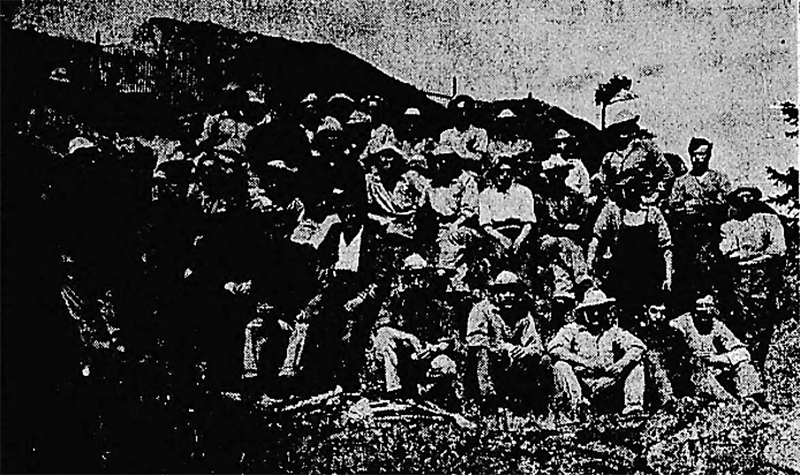 |
| Working party under Captain W.B. Almon R.C.G.A. who mounted 9.2 Guns on Signal Hill |
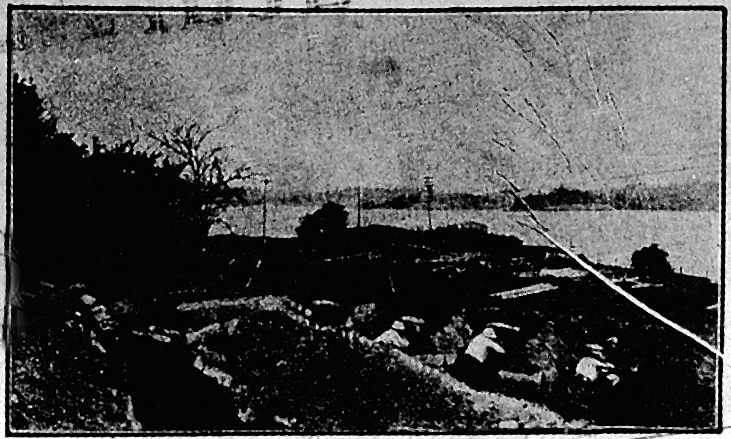 |
| Covered Way and Loopholes |
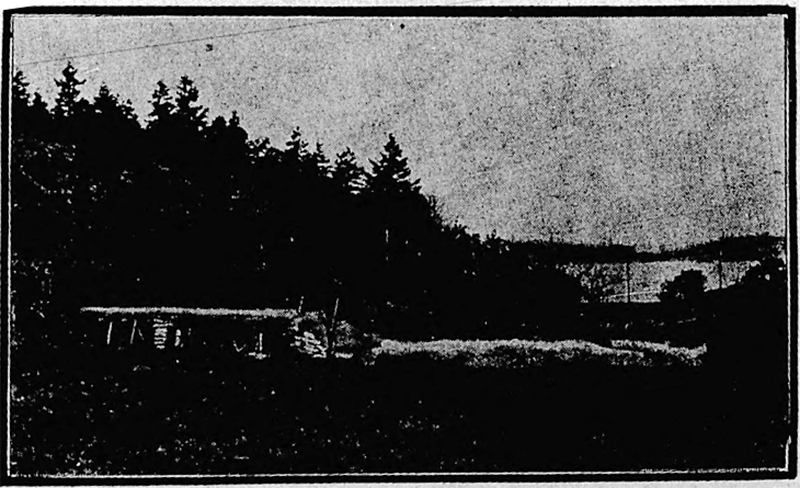 |
| Two Tier Fire Trenches at Belmont |
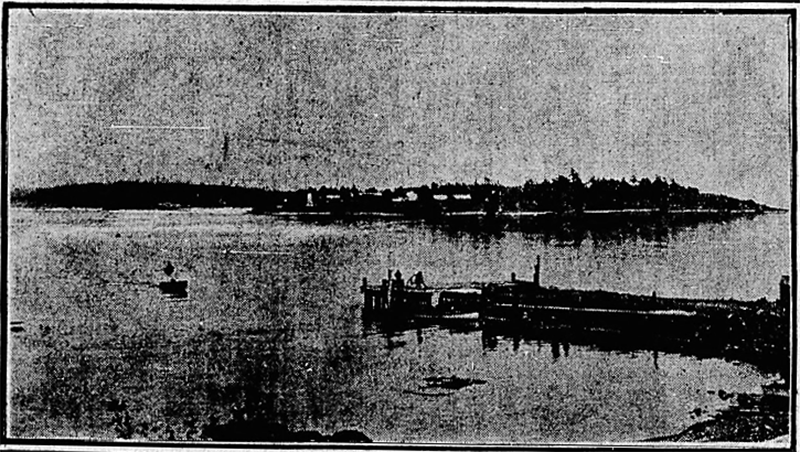 |
| Military Landing at Belmont |
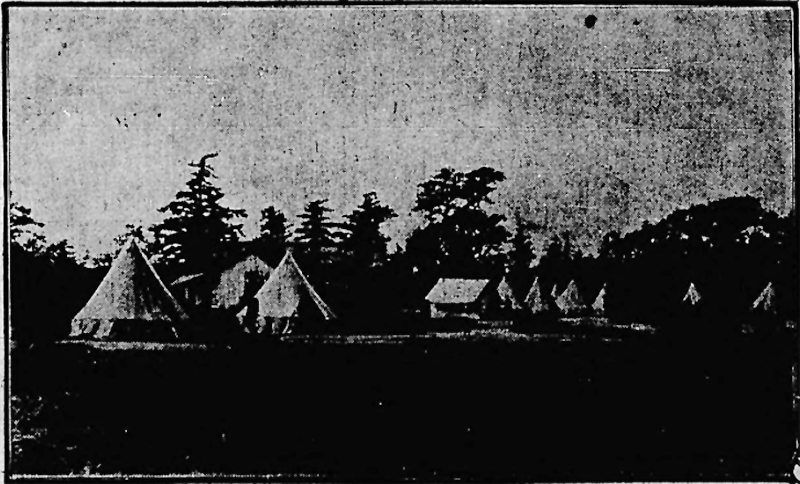 |
| The Staff Lines |
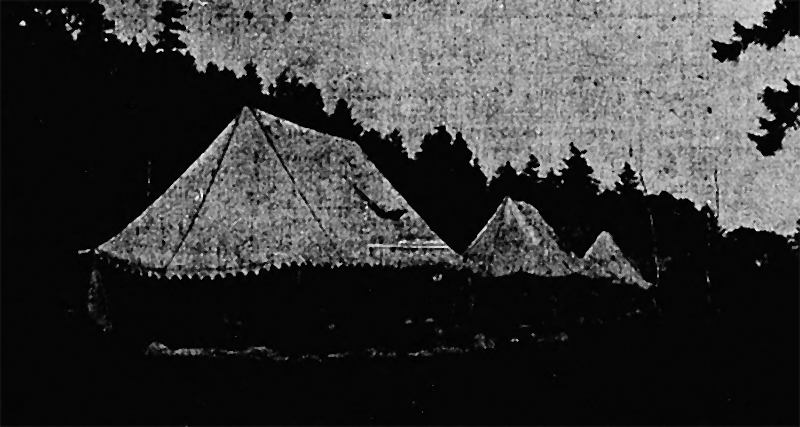 |
| The Tent Lines |
ESQUIMALT MUNICIPAL COUNCIL MINUTE BOOKS
October 29, 1912
Letter received from Col. Wadmore granting the use of the stables at Work Point for one police horse until 30 November 1912.
November 7, 1912
Motor Cyclist Corps
An effort is to be made to form a corps of motor cyclists as part of the militia forces of the district. Major Snow, of the Corps of Guides, is bringing the matter of the formation of a motor cyclist corps of militia to the attention of motor cyclists and if a sufficient number of cyclists volunteer to join the proposed corps, Col. R.L. Wadmore, D.O.C., will apply to the department of militia and defence for authority for the formation of the corps.
Victoria Times
November 9, 1912
NEW REGIMENT NOW OFFICIALLY FORMED
Major Beale Receives Copy of General Order Authorizing 88th Victoria Fusiliers
“The 88th Regiment Victoria Fusiliers is now in official existence, the authority having at last reached Major Beale, the Adjutant. The gazette notice announcing the formation of a new regiment is dated November 7, 1912.”
“The following extracts from an advance copy of General Order dated Ottawa, 3rd September, 1912, are published for general information.”
“Military District No. 11 – the organization of an eight company Regiment of Infantry, to be designated the 88th Regiment Victoria Fusiliers, with headquarters at Victoria, B.C., is authorized.”
“Major Beale said this morning the full strength of the regiment was 310 officers and men. The regiment will be given accommodation in the new drill hall when that building is completed.”
This article is relevant to Esquimalt as from the publication “THE WEEK” printed in September 1914 on the brief history of the 88th:“The headquarters of the 88th are at present at the Dry Dock, Esquimalt, where all ranks are in steady training and praying for orders to join the first contingent and make a complete unit.”
A photo was taken there, adjacent to the Dry Dock, of the 247 men that left as part of the first contingent leaving Victoria on August 28, 1914. A list of the men and photos are published in the supplement by the Colonist dated August 28th 1914. I submitted this event to the CFB Esquimalt Museum and it is on their web site.
Daily Colonist
December 1, 1912
WELCOME TO VICTORIA
The arrival in Victoria of a new commnder of the military district is an event of more than passing interest, especially when the newcomer is so recognized a soldier as is Colonel Alexandre Roy, M.V.O., who came here yesterday from Montreal.
Colonel Roy is a recruit from civil life to the military side. In his early days he was an accountant, but in 1880 he joined the 65th Regiment (Les Caribiniers de Montreal) and ever since he has been a soldier; first a volunteer and afterwards a member of the permanent staff. From the very outset of his military career he became known as an administrative man. Keen though he was in drill details, his executive capacity was soon manifested, and it was not long before he was assigned to the district staff under the late Colonel Houghton. Since then he has been actively identified with the militia of the Quebec command. He has been for many years D.O.C. at Montreal where he started as a subaltern. He is, therefore, a true Canadian soldier, a Canadian, true to his family and racial traditions, but none the less a Canadian from head to foot, speaking as if he had been born in Ontario, (some people say better) and absolutely au courant with all the developments of the Canadian Militia for more than thirty years.
Colonel Roy is welcome to Victoria as a distinguished and as an enthusiastic Canadian. Those who have known him in the East have learned to love him, and we believe that the same result will follow in this military district
For an additional article on Col. Roy, see page 3.
... continued in 1913 ...
|

